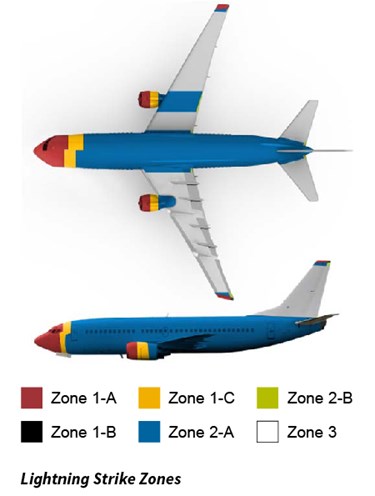Surfacing Films Improve Safety, Appearance and Processing Time
Sponsored ContentSurfacing films are evolving to meet challenging demands for lightweight solutions to protect composite structures and enable high-quality surface finishes with reduced preparation times.
Share
The increasing use of composites has helped manufacturers reduce weight and meet design challenges for new aircraft. These new materials and technologies require their own unique solutions to meet quality, performance and productivity targets.
Keeping Pace with Change
The demand for lightweighting and increased fuel efficiency continues to be a major focus in the industry. Production of the latest generation of new aircraft continues to ramp up, with estimates of up to 41,000 new aircraft required over the next 20 years. The ability to effectively use new materials, increase throughput, and reduce production costs have become dominant trends.

Henkel’s portfolio of aerospace surfacing films are formulated to address these trends by providing enhanced surface quality, protection of composite structures from lightning strikes, and improved production processing efficiencies. These easy-to-use films are lightweight, provide a smooth surface that reduces the need for time and labor-intensive surface preparation, and includes the latest technology that enables composites structures to safely dissipate the energy from lightning strikes.
The LOCTITE EA 9845 Aero family of surfacing films is marked by a low areal weight down to 0.020 psf, offering as much as 30% in weight savings as compared to standard surfacing films.
Composite materials, by their nature, have a greater amount of surface imperfections as compared to metal. Further, the process can be more complex to prepare a composite surface for paint. Henkel’s surfacing films help provide a paint-ready surface, significantly reducing surface preparation time.
Henkel’s lightning strike surfacing films simplify the production process, inventory management, and can reduce scrap and potential rework, resulting from damage to the conductive mesh that can occur during the traditional application process. Manufacturers have typically used a two-step process for lightning strike protection where they first apply the adhesive film, and then, in a second step, embed copper or aluminum mesh into the adhesive layer. This requires carrying both the adhesive and the conductive mesh in inventory, and risks damage to the mesh during handling. Henkel’s lightning strike films integrate the adhesive and conductive material into one ready-to-use film.
Enhance the Surface
Surface imperfections can require extra steps to achieve a paint-ready aircraft surface, increasing processing time and raising labor costs. Some composite structures require surface fillers to tackle imperfections like pinholes, print-through or other blemishes.
These blemishes traditionally undergo a repetitive sand/fill/sand cycle before the surface is ready for prime and paint. Henkel surfacing films are designed to eliminate these extra steps, providing a ready-to-prime and paint part with minimal surface preparation, saving time and expense.
Available in rolls, Henkel’s surfacing films fill voids and pin holes for a smooth surface, simplifying the surface prep and painting process. By providing benefits such as reduced core mark-through, and microcracking, they ultimately ensure higher surface quality. Henkel’s LOCTITE EA 9837.1, for example, offers good tack, minimizes core crush and porosity, and is highly resistant to cracking.
Protect the Surface

Composite surfaces are subject to weathering, including rain erosion, as well as other environmental damage. In addition, paint schemes for composites are becoming more complex. As a result, a hard film surface and smooth finish has become increasingly important. To protect the underlying plies, the film must be strong enough to mitigate potential damage from mechanical abrasion, UV exposure, and must provide a barrier for subsequent processes like sanding or paint removal.
Surfacing films can also help address the effect of thermal cycling. Thermal cycling can create microcracking in the aircraft surface coating. These tiny cracks can allow moisture ingression, which can ultimately lead to corrosion or delamination. Microcracking can be minimized by closely matching coefficient of thermal expansion (CTE) of prepregs, surfacing film and paint coating systems.
Henkel’s LOCTITE EA 9845 surfacing films are epoxy-based composite films manufactured with non-woven fabric for support and are designed to improve the surface quality and protection of composite parts. Broadly used across the whole aircraft, the system provides UV protection and chemical resistance to protect the composites below the surface.
The films are formulated to provide further protection to the structural fibers, establishing a barrier for dissimilar materials. They provide an additional layer to protect composite materials from external influences, both mechanical and chemical.
Lightning Strike Configurations

According to the FAA, a commercial aircraft is on average struck by lightning once a year. With the growing use of composites in place of metal for major aircraft structures, lighting strike protection is a critical requirement. Lightning can create serious risks to the structural integrity of the aircraft and to the safety of its passengers. Lightning strike protection is required to provide an effective means of safely dissipating the energy when a strike occurs.
Aircraft structures are divided into zones, which indicate high probability for strike entry, conductivity and exit points on the aircraft. Different levels of protection may be required in the different zones to comply with the aircraft manufacturer’s specifications. Henkel’s lightning strike films were designed to meet even the most stringent Zone 1A requirements.
Available in lightning strike configurations, surfacing films such as LOCTITE EA 9845 LC Aero provide the required protection, and were designed for ease of use and improved productivity.

The film integrates the adhesive layer and copper or aluminum mesh into one, ready-to-use film that can be applied to virtually all composite external components. Manufacturers can waste less time on production, reduce the number of materials and steps needed, and minimize waste from scrap mesh.
In addition to safely protecting the structure from lightning, the integrated single-film design improves production efficiency and reduces application labor. As with Henkel’s other surfacing films, it provides a smooth surface and protection against mechanical abrasion, microcracking, and other environmental threats. Further, areas affected by lightning strike can be easily repaired by sanding away the damaged area and applying a new layer of lightning strike film.
Selecting the Right Surfacing Film

Key factors to consider include environmental and temperature resistance, cure time and temperature, toughness and lightning strike protection requirements.
Flat and slightly contoured parts can easily use engineered surfacing films like those mentioned above; they are low flow and provide the best surface qualities. For honeycomb stiffened structures, engineered surfacing films can effectively resist core movement and mark-through. From there, configurations are tailored to customer needs. LOCTITE EA 9845 SF is available for flexible dual cure 250°F-350°F (120°C-177°C) and can accommodate out-of-autoclave as well.
Henkel surfacing films, including lightning strike configurations, are currently in use on a broad range of applications, including large commercial aircraft, business and general aviation aircraft, as well as defense and space applications.
To learn more about LOCTITE surfacing films and Henkel’s portfolio of aerospace products, click here, or contact Henkel for product inquiries.




